When
migrating from 10G to 40G/100G, it is important to know the MTP
polarity and gender. Understanding the MTP polarity can ensure that
connections between a transmitter and its receiver across the entire
fiber optic system are in a consistent, standards-based manner. In the
previous post “Introduction to Polarity Methods for MTP/MPO Systems”,
I have introduced the polarity systems for duplex signals. So in this
article, I would like to talk about MTP/MPO polarity methods for
parallel signals.
MTP/MPO Polarity Methods for Parallel Signals
As
we know, the purpose of array connectivity methods is to create an
optical path from the transmit port of one device to the receive port of
another device. Different polarity methods to accomplish this goal may
be implemented. However, these different methods may not be
inter-operable. Any connectivity method requires a specific combination
of components to maintain polarity. Figure 1 illustrates the
corresponding connectivity methods A, B and C to establish polarity for
parallel signals using an MPO transceiver interface with one row of
fibers.
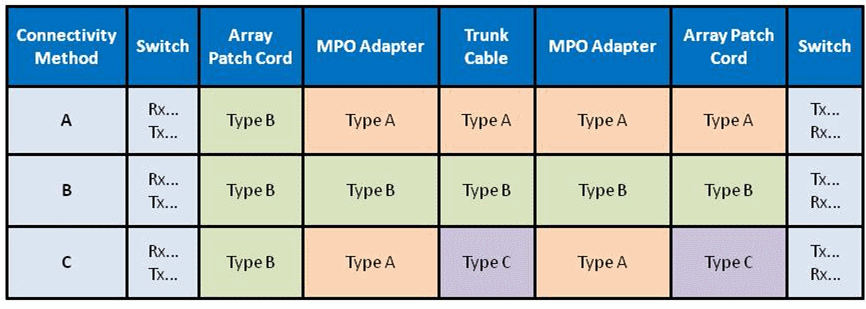
Figure 1: Polarity Methods A, B, C for Parallel Signals
Compared
with polarity methods for duplex signals, there are two differences for
parallel signals. First, the MTP/MPO cassettes for duplex signals are
replaced with MPO-to-MPO adapters for parallel signals. Second, the
duplex fiber patch cords for duplex signals are replaced with 12-fiber
patch cords for parallel signals. For the details about the polarity
differences between duplex signals and parallel signals, you can read “Type A MTP Cassette and Type B MTP Cassette: When and Where to Use?”
to know more information about polarity methods for duplex signals.
While for polarity methods for parallel signals, keep reading this post
for more information.
Connectivity Method A for Parallel Signals
When
connecting arrays for parallel signals, the Type A backbone is
connected on each end to a patch panel. On one end of the optical link, a
Type A array patch cord is used to connect patch panel ports to their
respective parallel transceiver ports. On the other end, a Type B array
patch cord is used to connect panel ports to their respective parallel
transceiver ports. In each optical path, there shall be only one Type B
array patch cord.
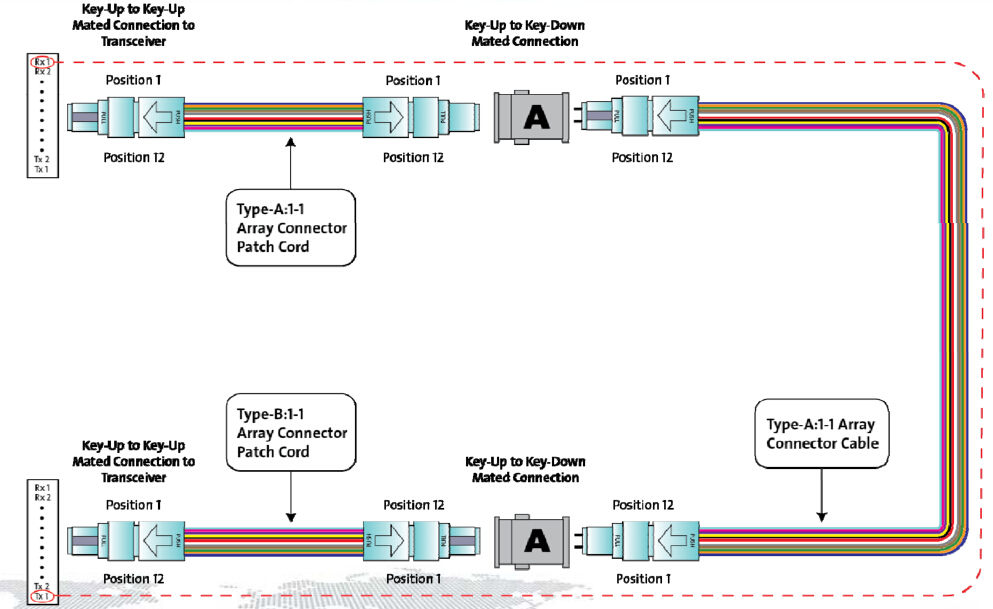
Figure 2: Connectivity Method A for Parallel Signals
Connectivity Method B for Parallel Signals
When
connecting parallel signals, the Type B backbone is connected on each
end to a patch panel. Type B array patch cords are then used to connect
the patch panel ports to their respective parallel transceiver ports.
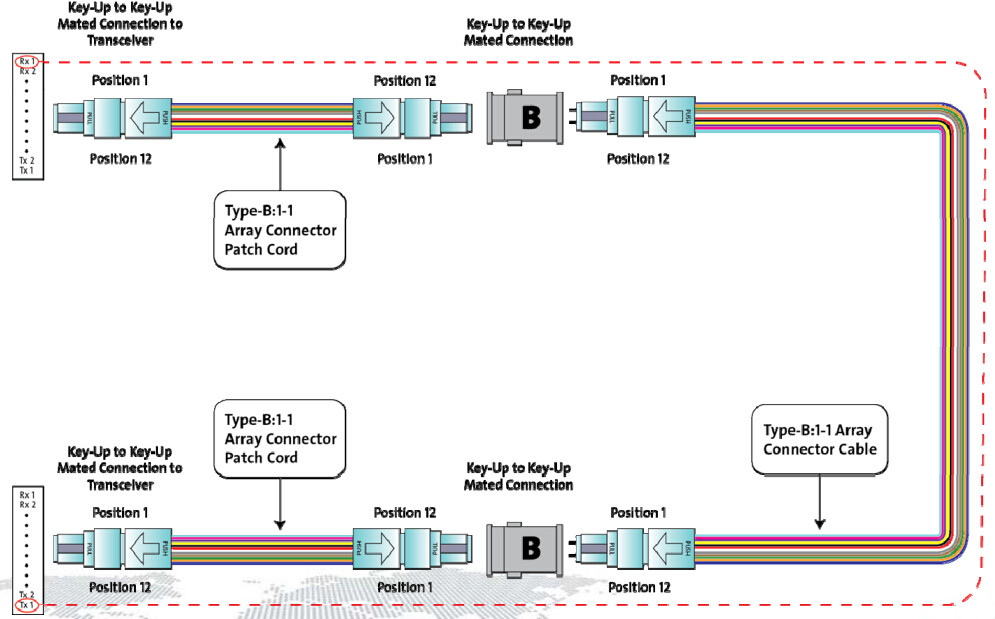
Figure 3: Connectivity Method B for Parallel Signals
Connectivity Method C for Parallel Signals
Connectivity
Method C for parallel signals is similar to connectivity method A. The
differences are Type C trunk cable is used instead of Type A, and a Type
C cross-over patch cord is required at one end and at the other end,
still Type B patch cable used.
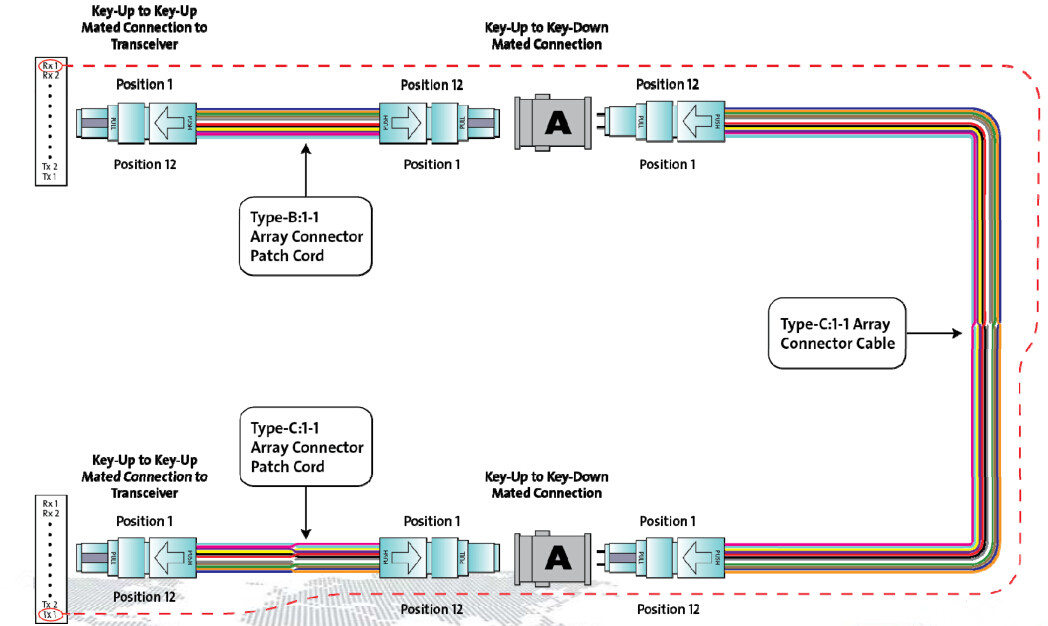
Figure 4: Connectivity Method C for Parallel Signals
Connection Tips
An
important point to remember is that MPO plugs use alignment pins. MPO
transceivers typically have pins (Male) and the patch cords from
transceiver to patch panel are typically unpinned (Female) on both ends.
Transitions (mounted behind the panel) are typically pinned (Male) on
both ends. Cables from rack to rack are typically unpinned (Female) on
both ends.
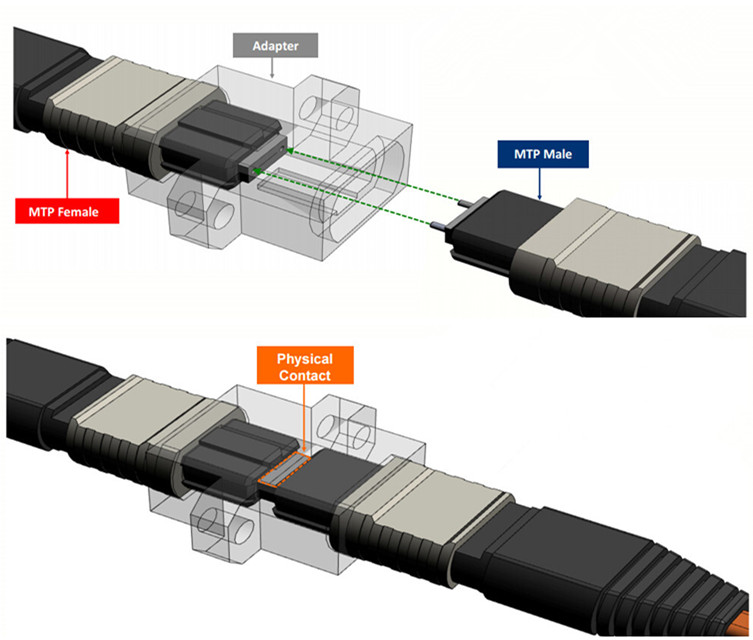
Figure 5: focused on the connection
The
physical contact area is the critical joining point in the fiber
network. If there is not a clean physical connection, the light path is
disrupted and the connection is compromised.
Conclusion
No
matter for duplex signals or for parallel signals, there are three
types of polarity methods A, B and C. Parallel optical fiber links
integrate multiple transmitters in one transmitter module, multiple
fibers in fiber array connectors, and multiple receivers in one receiver
module. When mating connectors that use alignment pins, it is critical
that one plug is pinned and the other plug is unpinned. Typically, the
pinned connector is located inside the panel. In other words, the fixed
connector is pinned and the connector that is frequently removed and
handled in unpinned. Hope the information in this article can help you
better understand the MTP/MPO polarity methods for parallel signals.
Originally published: Understanding MTP/MPO Polarity Methods for Parallel Signals